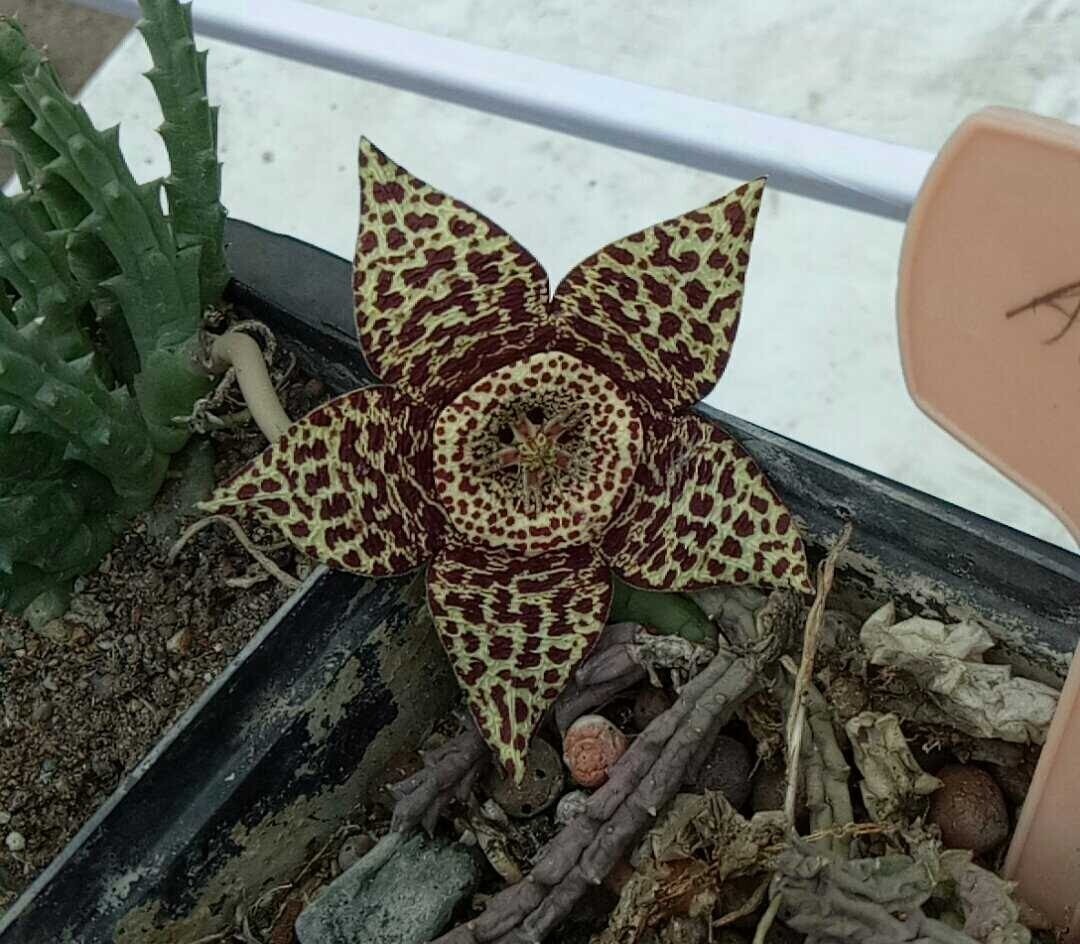Please check the Shipping Updates Page for information on shipping.
Orbea variegata
Origin of Name
The genus name "Orbea" is derived from the Latin word "orbis," meaning circle or disk, which likely refers to the shape of the plant's star-like flowers. The specific epithet "variegata" indicates the presence of variegation in the plant's foliage, although in this species, the term more commonly refers to the varied coloration found in its flowers. The common name "Starfish Plant" is a nod to the starfish-like appearance of its blooms, while "Carrion Flower" references the scent of the flowers, which mimic the smell of decaying flesh to attract pollinators such as flies.
Technical Description of Plant
Orbea variegata features fleshy, angular stems that sprawl and branch out from the base. The stems are light green with mottled patterns and can develop a reddish tint when exposed to full sun. It lacks traditional leaves, with photosynthesis occurring in the stems. The flowers are the most notable feature, blooming in clusters from late summer to fall. They are large, star-shaped, with a complex pattern of maroon, yellow, and brown, and emit a strong odor to attract pollinating insects. The flowers' intricate design and striking colors make them a fascinating display, despite their scent.
Origin of Plant
Orbea variegata is native to South Africa, where it grows in dry, rocky areas. It has adapted to thrive in harsh environments, storing water in its succulent stems to survive long periods of drought.
Conservation Status
Orbea variegata is not currently listed as endangered. It is widely cultivated and can be found in succulent collections worldwide. While not under significant threat, habitat destruction and overcollection can impact local populations in its native range. Cultivation in gardens and collections helps preserve this species by reducing the need for wild harvesting.
Care Instructions
Orbea variegata thrives in well-draining soil with plenty of grit to mimic its natural rocky habitat. It prefers full sun to partial shade, with more sunlight encouraging better flowering and stem coloration. Water moderately during the growing season, allowing the soil to dry completely between waterings, and reduce watering in the winter to mimic the plant's natural dormancy period. It is relatively frost-tolerant for a succulent but should be protected from freezing temperatures. Propagation is easily done by stem cuttings or seeds.
